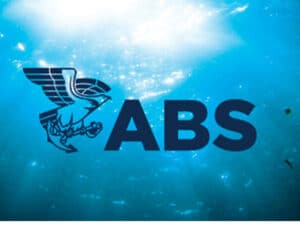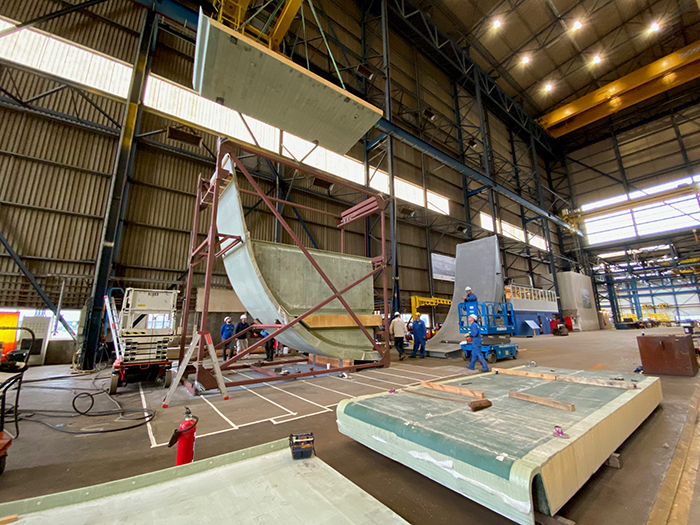
Project marks milestone on road to larger composites hulls
Written by Nick Blenkey
The project work has pioneered the capability to infuse thick laminates up to six meters in height [Image: Damen Shipyards]
An EU-funded project that aims to foster the application of new materials in maritime and inland waterway applications has marked a significant milestone with the unveiling of a full-scale composite ship’s hull section at Damen Schelde Naval Shipbuilding’s Vlissingen East shipyard in the Netherlands.
Under development for three years, the section has been produced by a “Custom Made Hull for Offshore Vessels” effort that is one of thirteen demonstrators being carried outunder the umbrella of the RAMSSES (Realization and Demonstration of Advanced Material Solutions for Sustainable and Efficient Ship) project.
The composites hull project will now go forward with a series of tests that, it is anticipated, will demonstrate the viability of large composite ships as a sustainable shipping solution.
A composite vessel like the one the RAMSSES partners are working towards would weigh up to 40% less than a steel equivalent. The results of this are a considerable reduction in both fuel consumption and emissions.
Currently however, in the absence of approved guidelines, regulations covering composite shipbuilding only cover vessels up to 500 tonnes – or approximately 25 meters in length.
RAMSSES aims to scale up the composite technology and capacity to design, produce and market composite vessels up to 85 meters long that are in full compliance with Safety of Life at Sea (SOLAS) and class regulations.
This work section of the project is led by Damen Schelde and Damen Shipyards Gorinchem (DSGo), which has developed the baseline design. Engineering has been performed by Airborne U.K. and InfraCore Company, who have brought their expertise in composites to the project. Another partner, Evonik, has developed the resin used to infuse the composites. Following assembly, TNO, the Netherlands organization for applied scientific research. will now perform full scale tests for validation of design, quality management and structural performance. Classification society Bureau Veritas has provided consultancy and advice that will lead to a smart track to approval.
The project work has pioneered the capability to infuse thick laminates up to six meters in height, while performing the assembly at Damen Schelde has demonstrated the possibility to undertake composite construction at a shipyard specializing in steel steel yard.
“The work we are doing here is important for the future of shipping. Sustainability is a major focus in industry right now and shipbuilding is no exception,” says Marcel Elenbaas, senior engineer, Research & Technology Support, Damen Schelde. “The use of composites for larger ships has significant consequences for the entire design of the ship. If it is lighter, a vessel uses less fuel and produces lower emissions. The vessel also requires smaller engines, which means more space for additional systems, making for a more versatile platform. And of course, composites require considerably less maintenance than a steel vessel. With RAMSSES we have the opportunity to demonstrate the effectiveness and viability of large-scale composite shipbuilding.”




